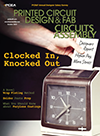Products
OmniFlex 10 Reflow Oven is designed to optimize operating efficiencies, reduce maintenance intervals, and lower life-cycle costs. Said to feature advanced heating and cooling transfer technologies, energy efficient design concepts and reduced maintenance requirements. Up to 50% less power and 35% less nitrogen is required than comparable platforms– due to new designs and features including standard, variable-speed closed-loop blower control, power limiting, balanced gas flow and a dual chamber heating design.
Process Width: 508 mm (20"); Heated Length: 3810 mm (148"); Cooling Length: 1285 mm (50.5"); and Maximum Operating Temperature: 350°C (662°F).
Electrovert VectraElite wave soldering system features a host of improvements.
Combines UltraFill nozzles and the upper High Velocity Convection pre-heat (HVC) module. The ServoJet spray fluxer is coupled with the Performa and Opti-Flux II. Has a new roll-out solder pot design, and additional enhancements.
Speedline Technologies,speedlinetech.com
Process Width: 508 mm (20"); Heated Length: 3810 mm (148"); Cooling Length: 1285 mm (50.5"); and Maximum Operating Temperature: 350°C (662°F).
Electrovert VectraElite wave soldering system features a host of improvements.
Combines UltraFill nozzles and the upper High Velocity Convection pre-heat (HVC) module. The ServoJet spray fluxer is coupled with the Performa and Opti-Flux II. Has a new roll-out solder pot design, and additional enhancements.
Speedline Technologies,speedlinetech.com
The μCT-FOX 2D/3D x-ray inspection system now offers hardware-based modular high-end volumetric isotropic rendering. Combines high-resolution 2-D x-ray technology with 3-D computed tomography techniques for inspection and analysis of complex electronic devices. Using dedicated hardware processors, the added hardware and software capability enhances defect detection, ideal for complex electromechanical component inspection applications.
A hardware and software based CT solution represents the next-generation of CT user interface. Has improved volumetric isotropic rendering, volumes can be produced that reveal the depth value required for a full 3-D analysis. Modular CT package can gather data sets from 2-D x-ray inspection systems and process them through a CT reconstruction engine. The resulting high-resolution CT images can be instantaneously uploaded to the internet, in real-time, using proprietary iView technology developed by TeraRecon. This feature allows F/A service labs to transmit CT imagery instantly using a secure internet connection. The software is integrated into Feinfocus GUI version 2.2, allowing users to save digital images in JPG, TIF, or BMP formats.
A hardware and software based CT solution represents the next-generation of CT user interface. Has improved volumetric isotropic rendering, volumes can be produced that reveal the depth value required for a full 3-D analysis. Modular CT package can gather data sets from 2-D x-ray inspection systems and process them through a CT reconstruction engine. The resulting high-resolution CT images can be instantaneously uploaded to the internet, in real-time, using proprietary iView technology developed by TeraRecon. This feature allows F/A service labs to transmit CT imagery instantly using a secure internet connection. The software is integrated into Feinfocus GUI version 2.2, allowing users to save digital images in JPG, TIF, or BMP formats.
FEINFOCUS, comet.ch
Version 5.0 of CXInsight for Electronics is a powerful project content management system that allows internal and external collaboration between project members across OEM and manufacturing sites. The release delivers functionality for flexible server-to-server connectivity across the electronics supply chain, based upon a peer-to-peer structure.
With server-to-server connectivity and appropriate authorisation, server owners can connect to other servers and work with their own fixed clients on all linked servers across different projects and through different firewalls. This allows partners to access data, track changes and perform required tasks while maintaining data integrity. A ‘two phase commit’ protocol ensures that data is intact and correct at all times, at all locations.
Jan Keijzer, managing director, said, “For true freedom in supply chain collaboration, server-to-server connectivity allows for multiple connections between the ‘owner’ of the data and all its external partners – in a secure and controlled environment, without compromise to rights control and management. It also allows customers to establish new collaborations with ease and flexibility, unlike in a client-server configuration. Since the launch of CXInsight, we are making good business in the OEM sector, where this added functionality is certainly required.”
Adeon Technologies, cxinsight.com
With server-to-server connectivity and appropriate authorisation, server owners can connect to other servers and work with their own fixed clients on all linked servers across different projects and through different firewalls. This allows partners to access data, track changes and perform required tasks while maintaining data integrity. A ‘two phase commit’ protocol ensures that data is intact and correct at all times, at all locations.
Jan Keijzer, managing director, said, “For true freedom in supply chain collaboration, server-to-server connectivity allows for multiple connections between the ‘owner’ of the data and all its external partners – in a secure and controlled environment, without compromise to rights control and management. It also allows customers to establish new collaborations with ease and flexibility, unlike in a client-server configuration. Since the launch of CXInsight, we are making good business in the OEM sector, where this added functionality is certainly required.”
Adeon Technologies, cxinsight.com


